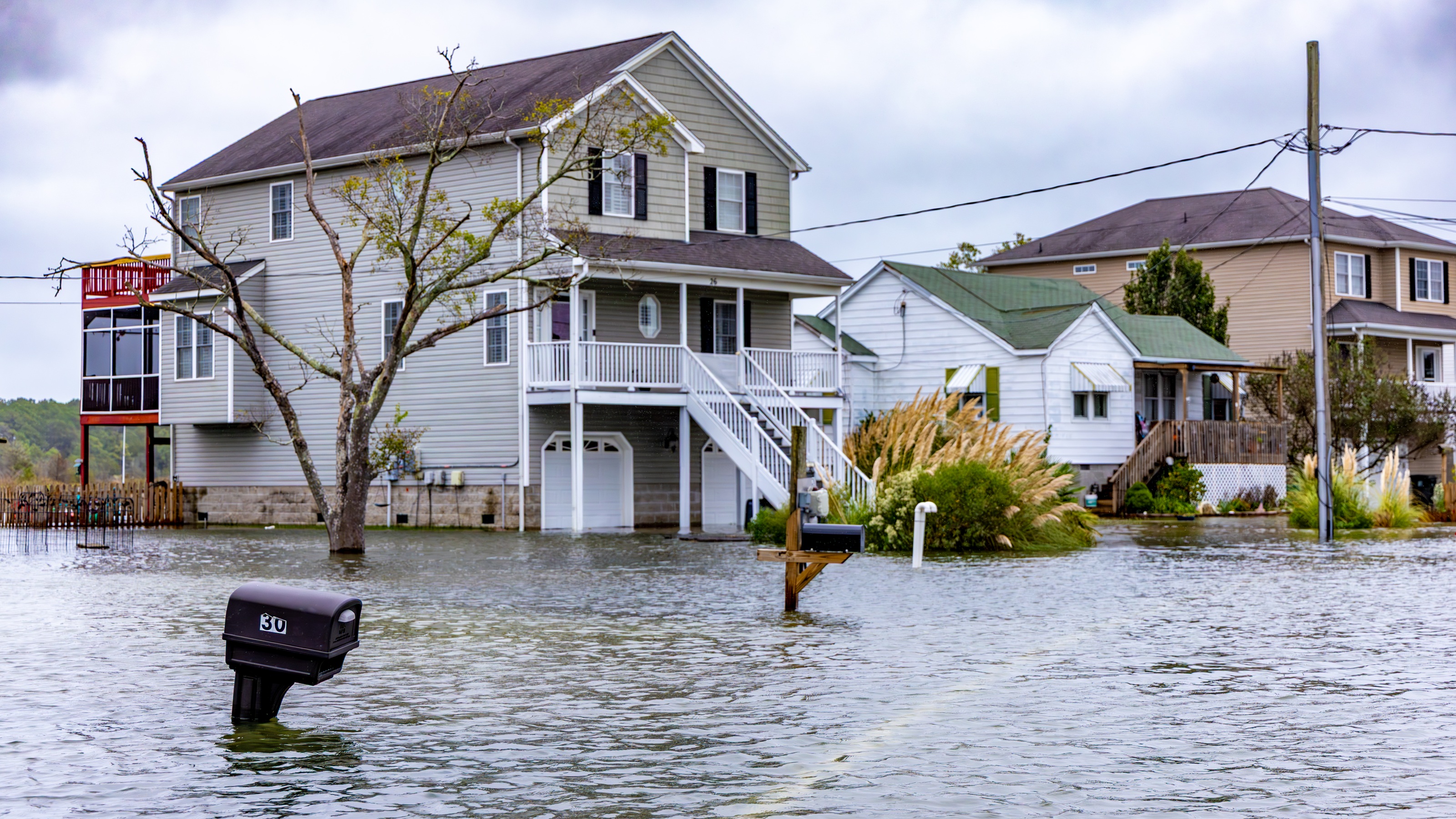3 Very Different Problems for Today’s Retirees
Times are changing, and your retirement plan needs to keep up. How could low interest rates, higher taxes and longevity risk affect your retirement?


Times have changed. We don’t use fax machines or 8-track tapes anymore, we don’t have to worry about having enough change for a payphone, and we don’t have to wait for film to develop. Life has become easier in many ways, but we also have new things to worry about — including online scams and, of course, a global pandemic.
Retirement planning is similar. While we have new ways to help us get to and through retirement, we also face new threats to our financial wellbeing. The best ideas of the past aren’t always the best ideas going forward, but sometimes it can be hard to look past conventional wisdom.
The world we are retiring in today is much different than the world of previous generations, and so is what’s appropriate in terms of planning and investing. Many people entering retirement don’t realize this and will model their retirement plans on their parents' plans. This could lead to undetected risks that have potentially disastrous results in the long term.
From just $107.88 $24.99 for Kiplinger Personal Finance
Be a smarter, better informed investor.

Sign up for Kiplinger’s Free Newsletters
Profit and prosper with the best of expert advice on investing, taxes, retirement, personal finance and more - straight to your e-mail.
Profit and prosper with the best of expert advice - straight to your e-mail.
Today's retirees face three unique challenges previous retirees did not: Low interest rates, potential tax risks and longevity risks. Let’s examine what makes the conditions so different, and why they drastically change the planning and investing landscape.
Low Interest Rates
When we approach and enter retirement, it’s important to shift investment focus from growth and accumulation to preservation and income generation. Interest rates control the world of safe growth and safe income investments. Right now, interest rates are very low, which is great for people who are borrowing, but horrible for people who need to live off their savings — aka retirees. Retirees will earn far less interest on their safe investments, such as cash, CDs, bonds and annuities. The less obvious part is just how dramatic of an impact this has on their ability to create lasting retirement income while avoiding too much investment risk.
Let’s say you wanted $20,000 a year of income from the interest on your investments. Imagine this was 30 years ago and you had a CD with an 8% interest rate. You would have needed $250,000 to generate this. In today’s world, imagine you get a 2% CD. In order to generate the same $20,000 a year of interest income, you would need $1 million. How long would it take you to save up $1 million vs. $250,000? Because of the interest rate landscape, you would need to quadruple your retirement savings if you planned to rely only on CDs and savings accounts. Low interest rates also affect the bond allocation inside of your portfolios. Not only do bonds themselves make far less interest now, but depending on which type of bonds you hold, if interest rates were to rise, your bonds can actually lose some of their value in the short term.
It’s as important as ever to protect your money and generate income in retirement — but today's retiree may need to use different tools than previous retirees relied on to carry them to and through retirement.
Potential Tax Risk
For many decades in this country, tax rates were much higher than they are today. The conventional wisdom says you should seek to lower your taxable income when working and then spend taxable savings in retirement when in a lower tax bracket. This way, you could contribute to your pre-tax 401(k) or IRA at a higher tax bracket now and withdraw money at lower rates later on.
Two things complicate this strategy for many of today's retirees. The first is that in the thousands of conversations I’ve had with people approaching retirement, almost nobody says they will suddenly want less money in retirement than they did when they were working. We develop budgets and lifestyles over the years that are based on the amount of income we have been used to receiving. Nobody wants to retire one day and just downgrade their lifestyle.
The second is that tax rates are at 100-year lows, and therefore, are likely to go higher in the future. Thanks to coronavirus relief spending, our already large government debt could rise to 130% or 140% of GDP, up from 100% at this time last year. Meanwhile, the Social Security trust fund is expected to run dry in about 15 years, and the Tax Cuts and Jobs Act will expire in a few years. What did legislators do after a period of high spending during WWII? They raised taxes. The same could happen in the coming decades. This means that if you contribute to your pre-tax 401(k) or IRA today, you might get a deduction at today’s low tax rates, but have to withdraw the taxable money at tomorrow’s higher rates.
If I were approaching retirement today, I would want to take advantage of today’s low tax rates by using a Roth IRA. In this case, you would pay tax on the funds converted and then be able to withdraw them tax-free later. This source of tax-free income in retirement removes some of the uncertainty from retirement planning and can be a great tax-minimization tool.
Longevity Risk
Finally, there is longevity risk. We continue to reap the benefits of advances in medicine and are living longer than ever. In 1950 the life expectancy for American men was 65.6, and it was 71.1 for American women. Now, life expectancy for American men who have reached age 65 is 83, and for women it is 85, according to the CDC. Of course, many people live to be older than that. While that is a wonderful thing, it presents the biggest risk of all when it comes to retirement planning: Outliving your money.
In fact, longevity risk is actually a multiplier of every other risk we have in retirement. It means more years to navigate the markets and risk, more years inflation eats away at savings, and more years you could need expensive medical care or long-term care. It’s simply that much longer you need to make your money last.
Take long-term care for example: According to government estimates, about 70% of Americans age 65 and older will need long-term care at some point in their lives. When you consider that the average cost of a private room in a nursing home is over $102,200 a year, covering long-term care costs can be a major financial burden in your later years.
There is also the fact that previous generations could rely on their home value and a pension in retirement. Low interest rates combined with how long we are living, led many companies to abandon the pension, especially after the 2008 financial crisis. Housing prices skyrocketed, the 2008 crisis got many into trouble, and low interest rates caused many people to refinance and extend their mortgages' maturity. So once again, we find the past pretty irrelevant for most of us now.
The Bottom Line
In summary, it’s important to understand the world around us and evolve with the times. You need to focus on preserving your wealth and investing in a way that can generate reliable income for the long haul. This means balancing risk, maintaining a reasonable rate of growth, and planning for a long retirement. On top of this, it’s important to understand what types of accounts you have from a tax standpoint, and how to take advantage of today’s low rates while reducing tax risk into the future.
An adviser can help you take advantage of all of the great decisions and proper strategies you had in the past to help you get to this point now, and even more importantly, help you develop strategies designed to take you into the new future.
Investment Advisory Services offered through Epstein and White Financial LLC, an SEC Registered Investment Advisor. Epstein & White Retirement Income Solutions, LLC is a licensed insurance agency with the state of California Department of Insurance (#0K53785). The information, suggestions and recommendations included in this material is for informational purposes only and cannot be relied upon for any financial, legal, tax, accounting or insurance purposes. A copy of Epstein & White Financial LLC’s current written disclosure statement discussing advisory services and fees is available for review upon request or at www.adviserinfo.sec.gov.
Profit and prosper with the best of Kiplinger's advice on investing, taxes, retirement, personal finance and much more. Delivered daily. Enter your email in the box and click Sign Me Up.

Bradley White is founder and CEO of Epstein and White. He's a Certified Financial Planner™ and has a bachelor's degree in finance from San Diego State University. He's an Investment Advisor Representative (IAR) and an insurance professional.
-
 Four Spa Retreats for Well-Heeled Retirees
Four Spa Retreats for Well-Heeled RetireesWe hand-picked these U.S. spa retreats for their serenity, amenities and dedication to the comfort of older travelers. All are located in the Continental U.S.
-
 Four Military Benefits That Have Helped My Family
Four Military Benefits That Have Helped My FamilyMilitary life can be challenging for servicemembers and their families, but they're offered some significant financial benefits to help cushion the blow.
-
 Why More Americans Are Redefining Retirement, Just Like I Did
Why More Americans Are Redefining Retirement, Just Like I DidRetirement readiness requires more than just money. You have a lot of decisions to make about what kind of life you want to live and how to make it happen.
-
 A Compelling Case for Why Property Investing Reigns Supreme, From a Real Estate Investing Pro
A Compelling Case for Why Property Investing Reigns Supreme, From a Real Estate Investing ProInvestment data show real estate's superior risk-adjusted returns and unprecedented tax advantages through strategies like 1031 exchanges and opportunity zones.
-
 Are You Retired? Here's How to Drop the Guilt and Spend Your Nest Egg
Are You Retired? Here's How to Drop the Guilt and Spend Your Nest EggTransitioning from a lifetime of diligent saving to enjoying your wealth in retirement tends to be riddled with guilt, but it doesn't have to be that way.
-
 Government Shutdown Freezes National Flood Insurance Program: What Homeowners and Buyers Need to Know
Government Shutdown Freezes National Flood Insurance Program: What Homeowners and Buyers Need to KnowFEMA's National Flood Insurance Program is unavailable for new customers, increased coverage or renewals during the government shutdown.
-
 Separating the Pros From the Pretenders: This Is How to Tell if You Have a Great Adviser
Separating the Pros From the Pretenders: This Is How to Tell if You Have a Great AdviserDo you leave meetings with your financial adviser feeling as though you've been bulldozed into decisions or you're unsure of what you're paying for?
-
 Five Downsides of Dividend Investing for Retirees, From a Financial Planner
Five Downsides of Dividend Investing for Retirees, From a Financial PlannerCan you rely on dividend-paying stocks for retirement income? You'd have to be extremely wealthy — and even then, the downsides could be considerable.
-
 I'm a CPA: Control These Three Levers to Keep Your Retirement on Track
I'm a CPA: Control These Three Levers to Keep Your Retirement on TrackThink of investing in terms of time, savings and risk. By carefully monitoring all three, you'll keep your retirement plans heading in the right direction.
-
 Debunking Three Myths About Defined Outcome ETFs (aka Buffered ETFs)
Debunking Three Myths About Defined Outcome ETFs (aka Buffered ETFs)Defined outcome ETFs offer a middle ground between traditional equity and fixed-income investments, helping provide downside protection and upside participation.